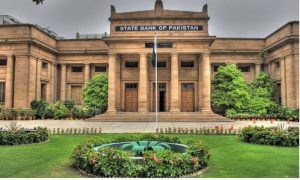Pakistan’s rice exports have climbed up to a historic peak at $2.121 billion where around 3.322 million tons were shipped during the first seven months of the fiscal year 2024 as compared with exports of $981.63 million with a volume of nearly 1.981 million tons in the same period of fiscal year 2022-23.
Pakistan has fetched $1.665 billion through exporting non-basmati (coarse rice) during seven months of the current fiscal year compared with $659.99 million in the same period a year ago. Basmati rice exported worth $456.14 million during seven months of the current fiscal year compared with $321.64 million during the same period a year ago.
Pakistan has achieved this awe-inspiring rice export growth through a timely devised strategy of ‘minimal intervention’ by the Ministry of Commerce in consultation with stakeholders to hammer timely decisions following India’s ban on rice exports.
India decided to place a ‘smart export ban’ on non-basmati white rice and a 20% export tax on Parboiled rice, said Shamsul Islam Khan, a leading rice exporter. The tricky ban was aimed to divert global rice demand towards rice-producing exporting countries Thailand, Vietnam, Pakistan USA and Cambodia and to hike rice prices in importing countries, he said.
Pakistan has exported 398,021 M/tons of Basmati rice at an average unit price (AUP) of $1146 per ton during seven months of the current fiscal year compared with 320,000 M/tons of Basmati rice, at AUP of US$1044 per ton during 7MFY23.
Pakistan’s non-basmati (coarse rice) exports were recorded at 2,924,467 M/tons at AUP of US$567 per ton during seven months of the current fiscal year compared with 1,661,434 M/tons at an average unit price of US$449 per M/ton. Pakistan has exported 2.7 Million Tons of rice from October 2023-January 2024.
This stunning growth in Pakistan’s rice exports is mainly attributed to a bumper crop of around 9.5 Million tons to be harvested in the season 2023-24, robust global demand especially from Far Eastern countries Indonesia and Malaysia owing to EL Nino heat-impacted dried weather and panic spread around rice eating and importing countries after smart export ban on white rice and import tax on Parboiled rice by India, Shamsul Islam said.
India is the largest rice exporting country and enjoys a 41% share of total global rice exports share which has fallen to 27% now after restrictions imposed to curb inflation amid forthcoming elections.
Country-wise break up showed that exporters have made efforts and penetrate in the Far Eastern market thereby increasing the volume of exports. Non-Basmati exports to Indonesia rose to $274 million in the seven months to Jan. 31 from $27 million in the corresponding period a year ago, according to data collected from Pakistan Customs.
Exports to Malaysia rose to $206 million from $53 million and Afghanistan up to $153 million from $77 million, the data said.
A cursory look into African markets revealed high yielding export numbers. Rice exports to Senegal went up to $82 million from $0.66 million, Djibouti up to $62 million from $1.71 million and Madagascar to $77 million from $3.9 million, the Customs data said. Moreover, exports to Kazakhstan rose sharply to $44 million from $0.91 million, said the data.
UAE with $85 million, Saudi Arabia with $51 million and Oman $43 million were the top buyers of Pakistani Basmati rice during the seven months of the current fiscal year, the Customs data showed. Moreover, Yemen and Afghanistan showed keen interest in buying Basmati rice from Pakistan.
Exports to Yemen rose to $28.5 million compared with $1.84 million last year of the same period. While Afghanistan bought $27 million worth of Basmati rice versus $0.46 million in the same period corresponding year, the data said.
IS THIS PHENOMENAL RICE EXPORTS GROWTH SUSTAINABLE?
“Globally rice prices were seen around 15 years high in 2023 due to increased farm input cost, high-interest rates and demand triggered due to white rice export ban and 20% tax imposed on Parboiled rice by India,” said Shamsul Islam Khan leading rice exporter and commodities expert.
Most people will link this export growth solely with the Indian decision to restrict outflows of their staple grains but I don’t agree with them 100% as Pakistan’s rice exports made possible this awesome growth because of the bigger size of rice production expected to be around 9.5 Million tons in the current season which successfully swallow demand pressure and rice prices are still lowest as compared to other rice-exporting countries of the world such as Thailand, Vietnam and Cambodia.
Another supporting argument he said was the increase in Basmati rice exports during the past seven months of the current fiscal year. Pakistan’s Basmati rice exports grew by around 36% during seven months of the current fiscal year, while there was no ban imposed on Basmati export by India,” Shams said.
Rice is the 2nd largest commodity exported from Pakistan by HS code after textiles and bears no intervention, no export subsidies or reduced tariff of electricity and gas from the Government.
“Doing business is not a business of government” The rice sector of Pakistan has proved it after the government of Pakistan shut down its entity RECP (Rice Export Corporation of Pakistan more than three decades ago. Federal or Provincial governments do not fix the Minimum Support Price for paddy growers but India does.
Pakistan’s rice sector developed purely on its own without any incentives. Keeping in view the current amazing pace of rice exports and competitive price advantage over other competitors in the region, “we foresee that rice exports may cross the milestone of 5 Million tons and the country will earn over US$3 Billion by the end of this fiscal year.
Shams added to achieve $4-5 billion in rice exports, Pakistan needs to cope with the growing risks of Aflatoxin and MRLs in European countries which is the biggest destination of Pakistan’s Super Basmati rice exports which enjoys premium prices over other rice varieties.
Besides bulk rice exports, Pakistani rice exporters must focus on branded exports in consumer packing to grab more share from global retail markets, he said.
During more than three decades, Rice Research Institutes Kala Shah Kaku (RRI KSK) and other Agriculture Institutes which have over 200 officials working under the Federal and provincial governments must wake up and revive old varieties of Basmati with improved yield and characteristics of extra-long grain preferably Open Pollinated varieties to reduce growers input cost.
This needs special attention of SIFC as corporate agriculture continues to overcome the growing risks of climate change, increasing Aflatoxin and MRLs to achieve sustainable export growth.























